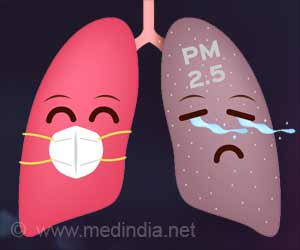Activities like construction, vehicle traffic, and domestic heating add significantly to the Delhi-National Capital Region's high concentrations of harmful air pollutants, say, experts.

‘In India, around 600,000 deaths annually are attributed to air pollution, and some of the world's highest levels can be found in Delhi.
’
Read More..




According to the World Health Organisation, air pollution was estimated to have caused nearly 4.2 million premature deaths worldwide in 2016. Read More..
"It is heartening to see the world come to terms with the fact that the climate change emergency should be at the top of every nation's agenda - not least India," said study researcher Prashant Kumar from the University of Surrey.
"Our analysis of Delhi's air pollution data over a significant period of time confirms that local sources of pollution - such as traffic and the heating of homes - are having a tremendous impact on air quality in the Delhi region," Kumar added.
Moreover, the surrounding regions of Delhi are suffering a substantial impact during the winter months, the researcher said.
Despite the long-term nature of the study, the results show a clear trend with significantly higher levels of air pollutants in winter months than in summer or monsoon periods, with the exception of ozone levels.
Advertisement
According to the study, the weather during the winter months - particularly reduced precipitation and low wind speeds - is also thought to play a significant role in raising pollutant levels.
Advertisement
The results suggest that local sources of pollution, such as traffic, construction, and domestic heating, influenced pollutant levels more than regional sources (air pollution from long-range traffic).
"The currently configured network of air pollution monitors does not permit the evaluation of long-range transport between Delhi and the NCR (and vice versa), highlighting a need for well thought out planning to expand the current network in the future," Kumar said.
Source-IANS









